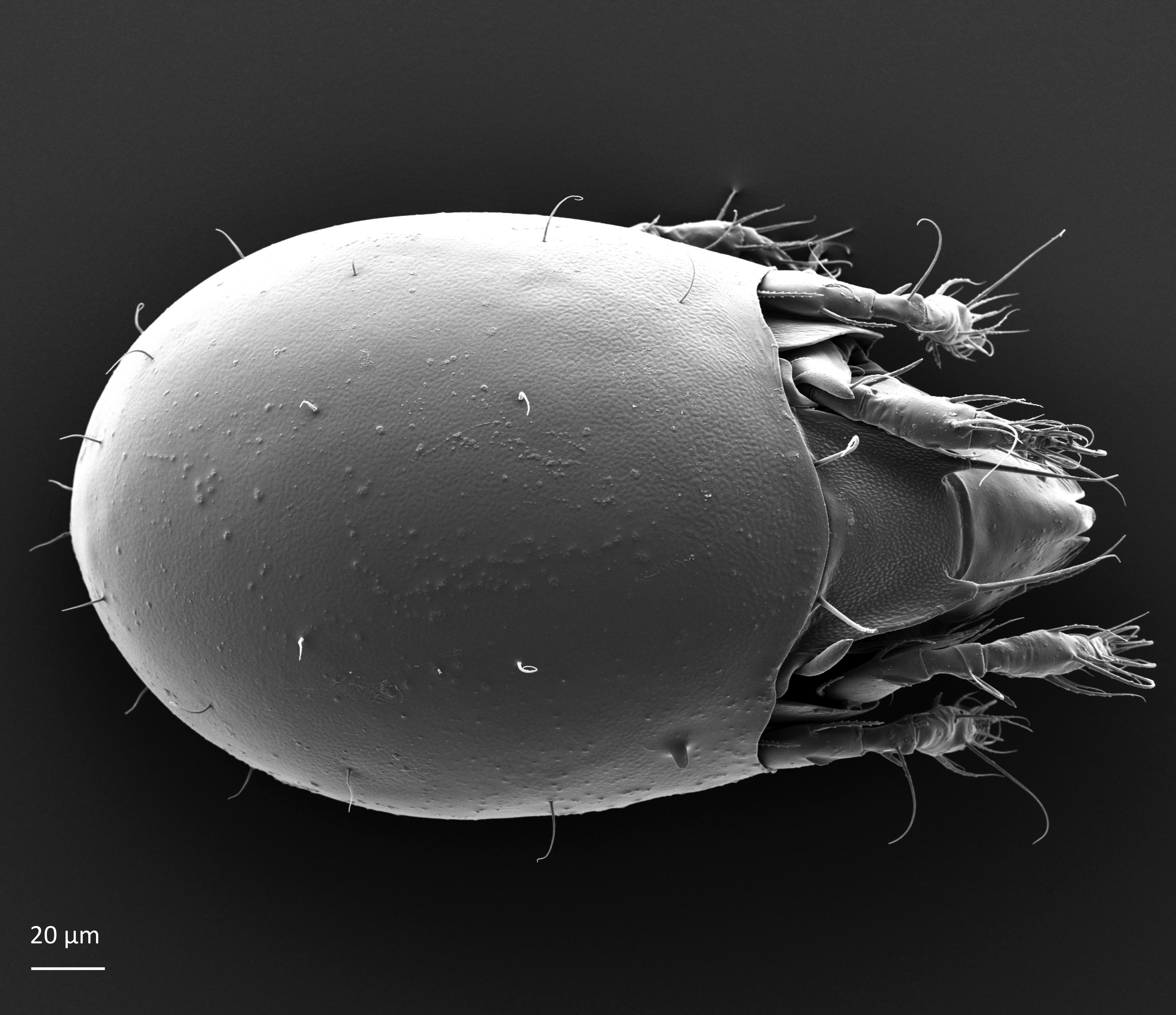Ceratozetidae
The family Ceratozetidae occurs worldwide. Species of this family can be found in forests, grasslands and tundra. Some are intermediate hosts of tapeworms that are parasites of wild and domestic mammals.
- Innhold
- Characteristics
- Habitat and ecology
The family Ceratozetidae includes 33 genera, 15 subgenera, 339 species and 11 subspecies (Subías 2023).
Characteristics
The adults vary a lot in size (270–990 µm long), and in color, from light brown to dark brown. The prodorsum has a pair of lamellae, but the translamella may be present or absent. They have 10–15 pairs of minute to long notogastral setae. Epimere IV, on the ventral side, has two or three pairs of setae (Weigmann 2006, Norton and Behan-Pelletier 2009, Behan-Pelletier and Lindo 2023).
Habitat and ecology
Ceratozetidae species are common in forests, grasslands and tundra, from the tropics to warm-temperate to high arctic and sub-Antarctic regions. They are mainly found in litter and soil, but also occur in grass, mosses, lichens, on trees, and in wet bogs. Their feeding habits are as diverse as their habitats. Some species are saprophages, i.e., they feed on dead organic matter including dead arthropods, others are mycophages, i.e., they eat fungi, and others yet are predators and feed on nematodes (Behan-Pelletier and Lindo 2023). Some species are intermediate hosts of tapeworms (Denegri et al. 1993).
Most Ceratozetidae reproduce bisexually (Maraun et al. 2019) but some are probably parthenogenetic, as e.g. Ceratozetes parvulus Sellnick, 1922 described here, where only females have been found (Seniczak and Seniczak 2022). Parthenogenetic females are produced from unfertilized eggs. The time of development has been studied in 12 species of Ceratozetidae, both in the field and under laboratory conditions (Pfingstl and Schatz 2021). The development from egg to adult was shortest in Ceratozetes cisalpinus Berlese 1908, 32 days at 25° C. The longest development was observed in Oromurcia sudetica Willmann 1939 that was reared at temperatures that simulated high alpine conditions (- 4° to + 16°C). The development from egg to adult took a minimum of two years, but sometimes lasted up to four years (Schatz 1985).
References
Behan-Pelletier VM and Lindo Z (2023). Oribatid Mites. Biodiversity, Taxonomy and Ecology. CRC Press, 508 pp.
Denegri GM (1993). Review of oribatid mites as intermediate hosts of the Anoplocephalidae. Experimental and Applied Acarology 17, 567–580.
Maraun M, Caruso T, Hense J, Lehmitz L, Mumladze L, Murvanidze M, Nae I, Schulz J, Seniczak A and Scheu S (2019). Parthenogenetic vs. sexual reproduction in oribatid mite communities. Ecology and Evolution 9(12), 7324–7332. doi.org/10.1002/ece3.5303
Norton RA and Behan-Pelletier VM (2009). Suborder Oribatida. In: GW Krantz and DE Walter (eds.). A manual of Acarology, 3rd ed. Texas Tech. University Press Lubbock, 430–564.
Pfingstl T and Schatz H (2021). A survey of lifespans in Oribatida excluding Astigmata (Acari). Zoosymposia 20, 007–027. doi.org/10.11646/zoosymposia.20.1.4
Schatz H (1985). The life cycle of an alpine oribatid mite, Oromurcia sudetica Willmann. Acarologia 26(1), 95–100.
Seniczak A and Seniczak S (2021). Morphological ontogeny and ecology of Ceratozetes parvulus (Acari: Oribatida: Ceratozetidae). Zootaxa 5086(1), 111–134. doi.org/10.11646/zootaxa.5086.1.9
Subías LS (2023). Listado sistemático, sinonímico y biogeográfico de los Ácaros Oribátidos (Acariformes, Oribatida) del mundo (1758−2002). Graellsia 2004, 60 (número extraordinario), 3−305. Updated 2023 – 18 actualization, 540 pp., access December, 2023.
Weigmann G (2006). Hornmilben (Oribatida). Die Tierwelt Deutschlands. 520 pp. Vol. 76, Goecke and Evers, Keltern.
